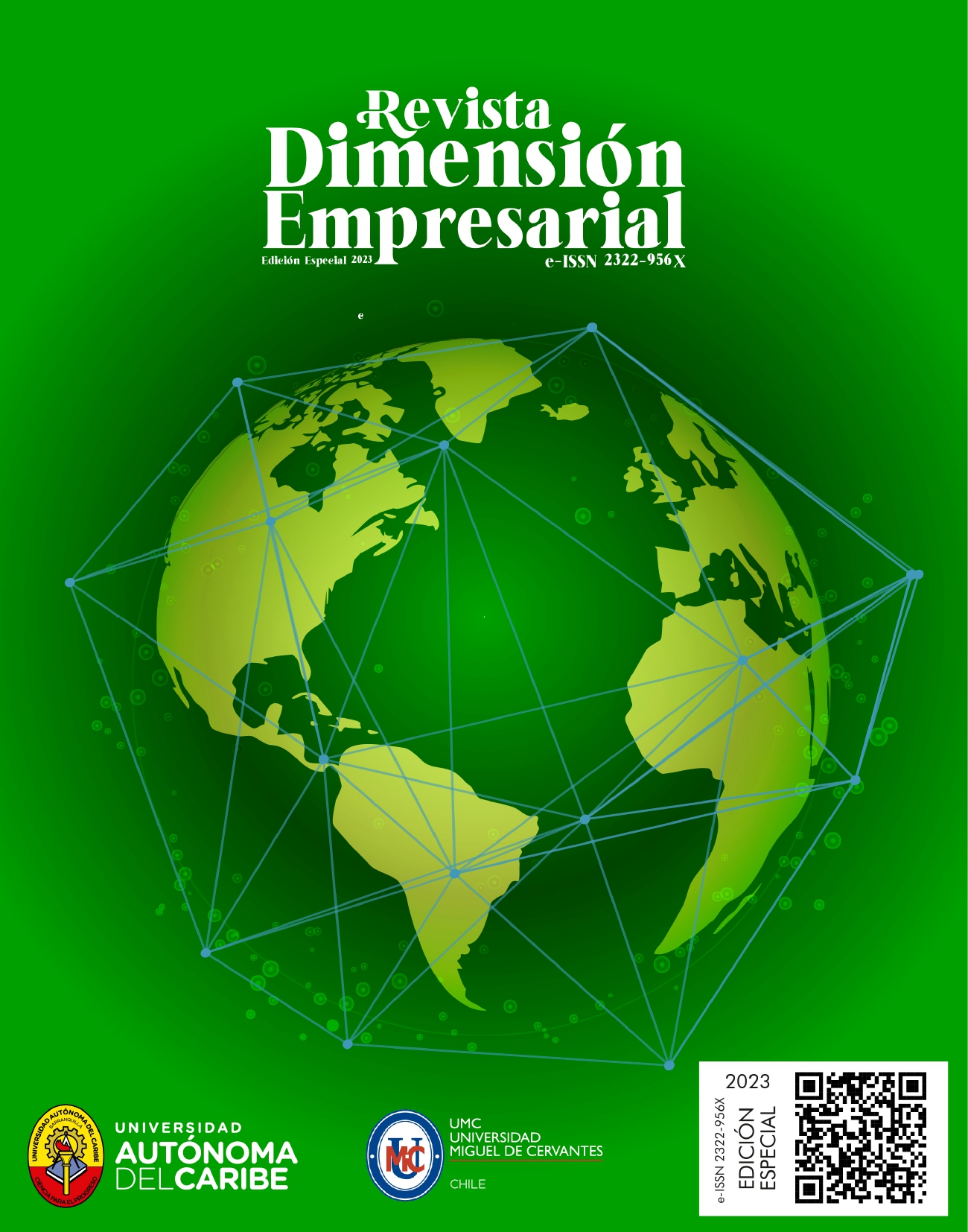Fundamentos conceituais da capacidade innovadora
DOI:
https://doi.org/10.15665/dem.v21i1.3465Palavras-chave:
Capacidades, Inovação, PessoasResumo
A capacidade inovadora é essencial para o desempenho organizacional. Nesta pesquisa, é realizada uma revisão teórica dos fundamentos da capacidade inovativa, em relação à abordagem da capacidade. Conclui-se na importância dos microfundamentos para o desempenho da capacidade inovadora.
Referências
Acs, Z. J., Audretsch, D. B., y Lehmann, E. E. (2013). The knowledge spillover theory of entrepreneurship. Small business economics, 41, 757-774.
Ajzen, I. (1991). The theory of planned behavior. Organizational behavior and human decision processes, 50(2), 179-211.
Andrews, K.R. (1971) The Concept of Corporate Strategy. Irwin, Homewood. Open Journal of Business and Management, Vol.2 No.3, July 25, 2014
Aregawi, H. T., y Patnaik, B. C. M. (2023). Impact of Government Intervention on Manufacturing Enterprises Innovation level, in Ethiopia. Cogent Economics y Finance, 11(1), 2182034.
Augusto Felício, J., Couto, E., y Caiado, J. (2014). Human capital, social capital and organizational performance. Management decision, 52(2), 350-364.
Bogers, M., Chesbrough, H., Heaton, S., y Teece, D. J. (2019). Strategic management of open innovation: A dynamic capabilities perspective. California Management Review, 62(1), 77-94.
Boland Jr, R. J., y Tenkasi, R. V. (1995). Perspective making and perspective taking in communities of knowing. Organization science, 6(4), 350-372.
Cerezo-Narváez, A., García-Jurado, D., González-Cruz, M. C., Pastor-Fernández, A., Otero-Mateo, M., y Ballesteros-Pérez, P. (2019). Standardizing innovation management: An opportunity for SMEs in the aerospace industry. Processes, 7(5), 282.
Chamberlin, E. (1933) The Theory of Monopolistic Competition. The Economic Journal, Volume 43, Issue 172, 1 December, Pages 661–666, https://doi.org/10.2307/2224511
Chudziński, P., Cyfert, S., Dyduch, W., y Zastempowski, M. (2022). Leadership decisions for company SurVIRval: evidence from organizations in Poland during the first Covid-19 lockdown. Journal of Organizational Change Management, 35(8), 79-102.
Cohen, W. M., y Levinthal, D. A. (1990). Absorptive capacity: A new perspective on learning and innovation. Administrative science quarterly, 128-152.
Cyert, R. and March, J. (1963) A Behavioral Theory of the Firm. Prentice-Hall, Englewood Cliffs.
D’Aveni RA. 1994. Hypercompetition: Managing the Dynamics of Strategic Maneuvering. Free Press: New York.
Damanpour, F. (1991). Organizational innovation: A meta-analysis of effects of determinants and moderators. Academy of management journal, 34(3), 555-590.
Davidsson, P. (2015). Entrepreneurial opportunities and the entrepreneurship nexus: A re-conceptualization. Journal of business venturing, 30(5), 674-695.
Del Giudice, M., Rosaria Della Peruta, M., y Maggioni, V. (2013). One man company or managed succession: The transfer of the family dream in southern‐Italian firms. Journal of Organizational Change Management, 26(4), 703-719.
Furman, J. L., Porter, M. E., y Stern, S. (2002). The determinants of national innovative capacity. Research policy, 31(6), 899-933.
Giuliani, E., y Bell, M. (2005). The micro-determinants of meso-level learning and innovation: evidence from a Chilean wine cluster. Research policy, 34(1), 47-68.
Honda, A., de Araujo Oliveira, S. R., Ridde, V., Zinszer, K., y Gautier, L. (2023). Attributes and Organizational Factors that Enabled Innovation in Health Care Service Delivery during the COVID-19 Pandemic–Case Studies from Brazil, Canada and Japan. Health Systems y Reform, 9(2), 2176022.
Hoppe, M. (2018). The Prime Mover Matrix: A Conversation Piece for Building Strategic Innovative Capacity. Technology Innovation Management Review, 8(7), 5-13.
Jin, C. H., y Lee, J. Y. (2020). The impact of entrepreneurship on managerial innovation capacity: The moderating effects of policy finance and management support. South African journal of business management, 51(1), 1-13.
Kahneman, D. (2003). Maps of bounded rationality: Psychology for behavioral economics. American economic review, 93(5), 1449-1475.
Kahneman, D. y Tversky, A. (1979). An Analysis of Decision under Risk Econometrica i ci. Econometrica, 47(2), 263-291.
Kahneman, D., y Frederick, S. (2007). Frames and brains: Elicitation and control of response tendencies. Trends in cognitive sciences, 11(2), 45-46.
Kahneman, D., y Tversky, A. (1984). Choices, values, and frames. American psychologist, 39(4), 341.
Kahneman, D., Lovallo, D., y Sibony, O. (2019). A structured approach to strategic decisions. MIT Sloan Management Review.
Kitsios, F., y Kamariotou, M. (2021). Information Systems Strategy and Innovation: Analyzing Perceptions Using Multiple Criteria Decision Analysis. IEEE Transactions on Engineering Management.
Laursen, K., y Salter, A. (2006). Open for innovation: the role of openness in explaining innovation performance among UK manufacturing firms. Strategic management journal, 27(2), 131-150.
Lessard, D., Teece, D. J., y Leih, S. (2016). The dynamic capabilities of Meta‐multinationals. Global Strategy Journal, 6(3), 211-224.
Lorenz, M. P., Ramsey, J. R., y Richey Jr, R. G. (2018). Expatriates’ international opportunity recognition and innovativeness: The role of metacognitive and cognitive cultural intelligence. Journal of World Business, 53(2), 222-236.
Mancuso, I., Petruzzelli, A. M., y Panniello, U. (2023). Innovating agri-food business models after the Covid-19 pandemic: The impact of digital technologies on the value creation and value capture mechanisms. Technological Forecasting and Social Change, 190, 122404.
Martínez Ardila, H. E., Mora Moreno, J. E., y Camacho Pico, J. A. (2020). Networks of collaborative alliances: the second order interfirm technological distance and innovation performance. The Journal of Technology Transfer, 45, 1255-1282.
McGrath, R. G. (2001). Exploratory learning, innovative capacity, and managerial oversight. Academy of management journal, 44(1), 118-131.
Mitchell, R., y Boyle, B. (2021). Understanding the role of profession in multidisciplinary team innovation: Professional identity, minority dissent and team innovation. British Journal of Management, 32(2), 512-528.
Moon, T. (2010). Organizational cultural intelligence: Dynamic capability perspective. Group y Organization Management, 35(4), 456-493.
Mowery, D. C., Malerba, F., Dosi, G., y Teece, D. J. (2019). Introduction: Nathan Rosenberg as a founding father of the economics of innovation. Industrial and Corporate Change, 28(2), 283-288.
Nelson, R. y Winter, S. (1982) An Evolutionary Theory of Economic Change. Harvard University Press, Cambridge, MA.
Nepal, A. (2023). Role of political economy in mediating innovation and entrepreneurship–a perspective based on some cases from Nepal. Access Journal, 4(2), 205-220.
Nisbett, R. E., Peng, K., Choi, I., y Norenzayan, A. (2001). Culture and systems of thought: holistic versus analytic cognition. Psychological review, 108(2), 291.
Nosratabadi, S., Bahrami, P., Palouzian, K., y Mosavi, A. (2020). Leader cultural intelligence and organizational performance. Cogent Business y Management, 7(1), 1809310.
Oliver, R. L. (1980). A cognitive model of the antecedents and consequences of satisfaction decisions. Journal of marketing research, 17(4), 460-469.
Peteraf, M. A. (1993). The cornerstones of competitive advantage: a resource‐based view. Strategic management journal, 14(3), 179-191.
Petit, N., y Teece, D. J. (2021). Innovating big tech firms and competition policy: favoring dynamic over static competition. Industrial and Corporate Change, 30(5), 1168-1198.
Petricevic, O., y Teece, D. J. (2019). The structural reshaping of globalization: Implications for strategic sectors, profiting from innovation, and the multinational enterprise. Journal of International Business Studies, 50, 1487-1512.
Piršl, E., Drandić, D., y Matošević, A. (2022). Cultural intelligence: Key intelligence of the 21st century? Validation of CQS instrument. Medijske studije, 13(25), 90-105.
Pittaway, L., Robertson, M., Munir, K., Denyer, D., y Neely, A. (2004). Networking and innovation: a systematic review of the evidence. International journal of management reviews, 5(3‐4), 137-168.
Ricardo, D. (1817). On the Principles of Political Economy and Taxation (John Murray, London). In: Sraffa, P., Ed., The Works and Correspondence of David Ricardo, Vol. 1, Cambridge University Press, Cambridge, 1951.
Richardson, G. B. (1972) The Organisation of Industry, The Economic Journal, Volume 82, Issue 327, Pages 883–896, https://doi.org/10.2307/2230256
Schilling, M. A., y Phelps, C. C. (2007). Interfirm collaboration networks: The impact of large-scale network structure on firm innovation. Management science, 53(7), 1113-1126.
Schumpeter, J. A. (1950). Capitalism, Socialism, and Democracy: Third Edition. Reino Unido: HarperCollins.
Smith, A. (1776). The Wealth of Nations: An inquiry into the nature and causes of the Wealth of Nations. Harriman House Limited, 2010.
Son, I., Kim, J., Park, G., y Kim, S. (2018). The impact of innovative technology exploration on firm value sustainability: The case of part supplier management. Sustainability, 10(10), 3632.
Suhandiah, S., Suhariadi, F., Yulianti, P., y Abbas, A. (2023). Autonomy and feedback on innovative work behavior: the role of resilience as a mediating factor in Indonesian Islamic banks. Cogent Business y Management, 10(1), 2178364.
Teece, D. J. (2007). Explicating dynamic capabilities: the nature and microfoundations of (sustainable) enterprise performance. Strategic management journal, 28(13), 1319-1350.
Teece, D. J. (2017). Towards a capability theory of (innovating) firms: implications for management and policy. Cambridge journal of economics, 41(3), 693-720.
Teece, D. J. (2018). Profiting from innovation in the digital economy: Enabling technologies, standards, and licensing models in the wireless world. Research policy, 47(8), 1367-1387.
Teece, D. J. (2020). Innovation, governance, and capabilities: implications for competition policy: A Tribute to Nobel Laureate Oliver Williamson by his Colleague and Mentee David J. Teece. Industrial and Corporate Change, 29(5), 1075-1099.
Teece, D. J. (2022). A wider‐aperture lens for global strategic management: The multinational enterprise in a bifurcated global economy. Global Strategy Journal, 12(3), 488-519.
Teece, D. J., Pisano, G., y Shuen, A. (1997). Dynamic capabilities and strategic management. Strategic management journal, 18(7), 509-533.
Thakker, A., y Sun, D. (2023). Handmade papers: Innovation, Technology, and Design. Journal of Natural Fibers, 20(1), 2187505.
Tversky, A., y Kahneman, D. (1981). The framing of decisions and the psychology of choice. science, 211(4481), 453-458.
Williamson, O. E. (1999). Strategy research: governance and competence perspectives. Strategic management journal, 20(12), 1087-1108.
Zaheer, A., y Bell, G. G. (2005). Benefiting from network position: firm capabilities, structural holes, and performance. Strategic management journal, 26(9), 809-825.
##submission.downloads##
Publicado
Como Citar
Edição
Secção
Licença
Direitos de Autor (c) 2024 David Álvarez-Maldonado

Este trabalho encontra-se publicado com a Licença Internacional Creative Commons Atribuição-NãoComercial-SemDerivações 4.0.
Os autores mantêm todos os direitos a que têm direito e autorizadas com a sua reprodução de assinatura gratuita do documento enviado ou, no caso se necessário, assumirá, ao assinar o Certificado de Originalidade e Cessão de Direitos, o registro de ter a autoridade para a transferência de direitos de propriedade que estão livres devido a nenhum custo para qualquer procedimento do Dimensión Empresarial.
Instruções para preenchimento Originalidade Certificação e Transferência de Direitos de autor.
1. Clique aqui e tenha a originalidade da forma Certification and Copyright Assignment.
2. No formulário baixo, clique em cada um os campos e preencha os correspondentes.
3. Uma vez que os campos estão preenchidos, copie o fim sua assinatura digitalizada ou assinatura digital. Por favor, ajustar o tamanho da assinatura no formulário.
4. O formulário deve ser assinado por todos os autores.
5. Finalmente, salvá-lo como PDF e enviá-lo através da plataforma OJS como arquivo suplementar ou correio revistadimensionempresarial@uautonoma.edu.co.
Se você tiver dúvidas contate-nos, por favor.



